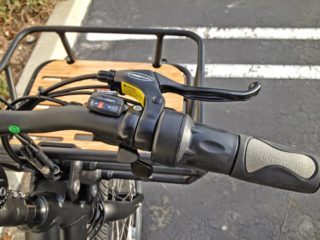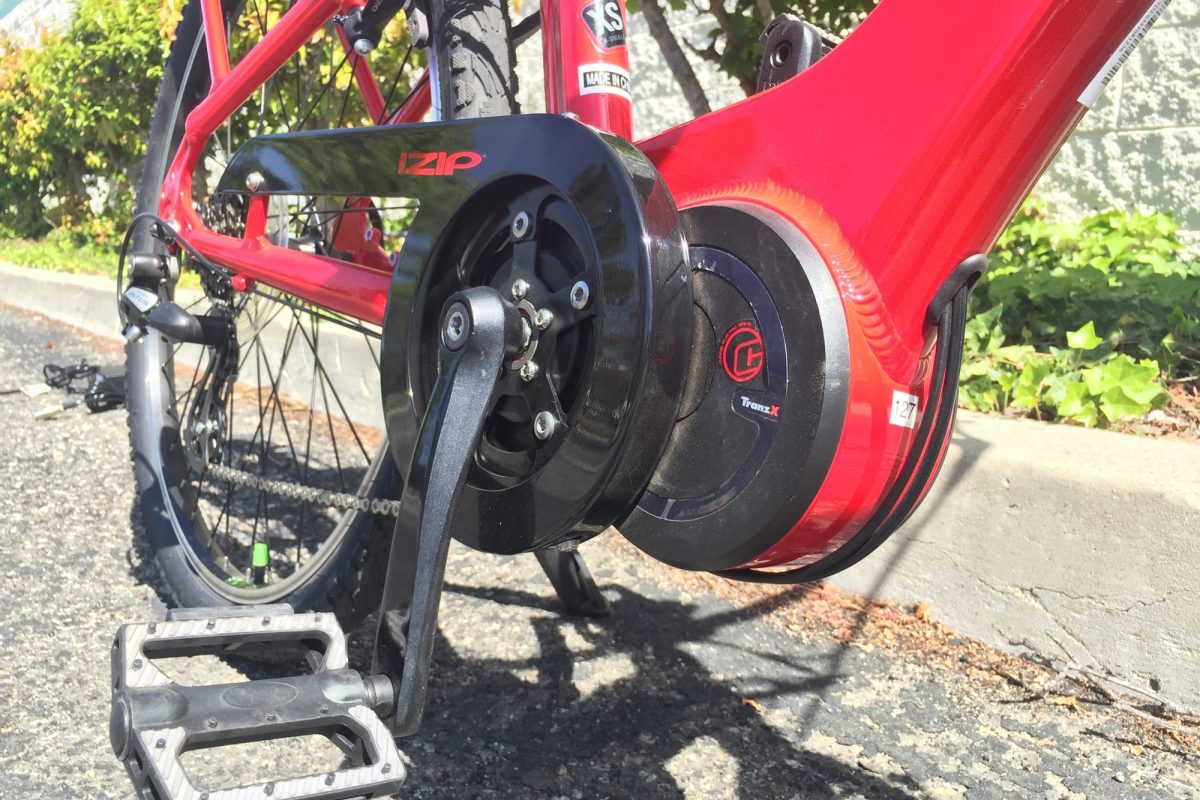

They opted for a Shimano Altus derailleur, which is one step-up from the lowest component group in the Shimano line. The seven-speed drivetrain is good enough for around urban rides on concrete but might struggle a bit on the steepest hills. In order to get the price point lower, a few hardware compromises have been made. The geometry is relaxed and upright, wider tires provide stability and comfort, and two frame styles and colorways offer a “his and hers” possibility where you could share batteries and deal with one company (and possibly get a deal purchasing multiple bikes at the same time). What the IZIP E3 Zuma offers is a comfortable, relatively affordable, neighborhood cycling experience. I’ve visited the headquarters and personally know a few of the team members who answer calls and they helped me get feedback and details to create this review. You can call in to get help with issues and find replacement parts going back several generations. IZIP has a good reputation in the space because they are backed by an electric bike competency support center.
#Izip throttle update#
It’s a wonderful update and one of my favorite current-generation cruiser ebikes. This improves frame stability and handling, reduces frame flex, and offers greater range because the mid-motor can leverage the gears to climb or maintain speed more efficiently. I’ve reviewed four earlier versions of the IZIP E3 Zuma electric bicycle, dating back to 2014, but this latest 2018 iteration is the first one I’ve seen that uses a mid-drive motor and downtube mounted battery pack. We appreciate the opportunity to serve you with our opinions and data but respect your right to know that we receive compensation :) It’s the same flat fee for each bike, and it helps us to keep the site going while limiting ad clutter. I've since disconnected the PAS on that bike.EBR charges a service fee to manufacturers to produce ebike reviews and videos, this began in 2018.

It wasn't too bad, but it scared her away from Ebikes for a couple months. My wife had a real scare the first time she rode it She was stopped at a light and adjusted the pedals so that they would be in optimum position for take-off, the PAS detected movement, and the throttle kicked in for an instant. There is a one second delay or so from the time you stop pedaling to the time the motor cuts off, which takes a while to get used to. When you engage PAS, it will control the motor based on how fast you are pedaling. The other kind is on a folder I recently picked up. If you stopped pedaling, the throttle would stop working. It was a good way to make sure that you were always helping out a little, but you could trick the sensor by putting the bike in a low gear and pedaling without actually applying any help. You didn't have to turn PAS on, but when it was on, the throttle acted normally as long as the sensor detected pedaling motion. The PAS sensor was really like an on/off switch for the throttle. I'm sure there's a happy middle ground I haven't found yet. I've started more than once to design that, but stopped because of the mechanical stuff sensing the chain tension-all the simple ideas will require more electronics than I am comfortable with figuring out, and all the simple electronics need more mechanical work than I can do. Then I would use a hand-operated throttle as an override to the PAS, so that whatever I do with that will control it, if it's not in the completely-off position. I have yet to try any PAS system if I were to use one, it'd have to be of the latter type, essentially giving me "bionic legs", as the BionX system is intended to do. Others use an actual torque sensor of some type, and that is the throttle.

Others seem to basically use the pedal sensor as a throttle by counting how fast the pulses happen, and outputting a voltage proportionally to that. I expect it depends on the controller I've read of some PAS systems that seem to simply provide assist or not, if you are or are not pedalling-no level of control at all.


 0 kommentar(er)
0 kommentar(er)
